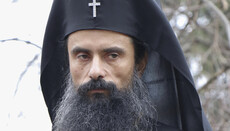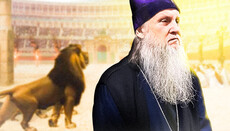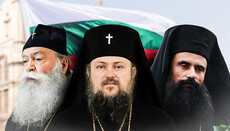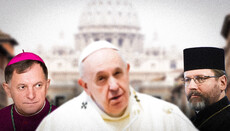What's the Ecumenical Concept of the Ukrainian Greek Catholic Church about?
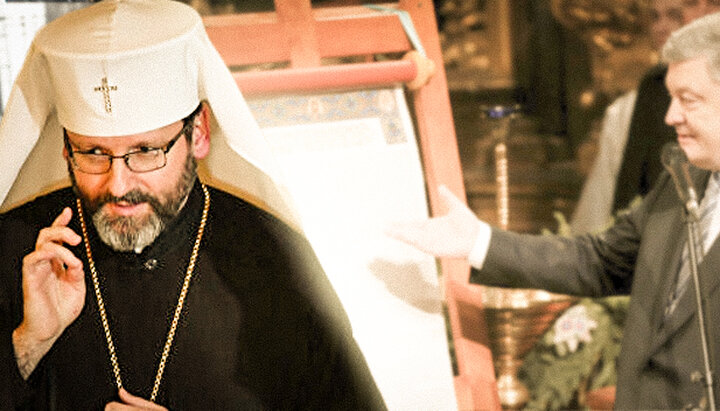
The UGCC declares itself to be the Local Kievan Church, around which all others should unite. What lurks behind it?
At the end of October 2021, the UGCC published its updated Ecumenical Concept. The previous version was adopted in 2015 for a term of 5 years. The new Concept takes into account the changed realities and, first of all, the emergence of the Orthodox Church of Ukraine (OCU).
The Ecumenical Concept of the UGCC is an official document that articulates certain statements that Greek Catholics want to convey to society, primarily Ukrainian. These statements in a more popular form are often voiced by the leadership of the UGCC, as well as representatives of Uniate educational institutions. In this article, we will not cite oral statements of the Uniate leaders, but rather focus on the analysis of the Concept. We should do justice to the Uniates who know how to be eloquent and convincing. They (and even more "pure" Catholics) are good at wrapping ideas being completely false or harmful for people in such an attractive “package” that they are taken at face value and determine the worldview of the many. Therefore, it is highly important to expose these false statements and say what they actually mean.
Statement 1: Ecumenism Is a Godly Business
The Concept states: “Ecumenism as a movement for the restoration of the full unity of Christians is the path of the Church of Christ; it is not an addition, but an integral part of the essence of the Church and Her pastoral activity."
Indeed, our Lord Jesus Christ, before suffering on the cross, prayed to God the Father: “My prayer is not for them alone. I pray also for those who will believe in me through their message, that all of them may be one, Father, just as you are in me and I am in you. May they also be in us so that the world may believe that you have sent me" (John 17:20-21). Although this is not a commandment of Christ to his followers, as many claim, but the prayer of Christ to Heavenly Father, yet Christians are obliged to do everything in their power to make this prayer a reality. Greek Catholics (and not only them, but also many Orthodox), on the basis of these words of Christ, argue that all Christians should strive for unity, but few pay attention to what this unity should be like. However, the words of Christ make it clear to us that the model of such unity is the image of the Holy Trinity. But can three Persons of the Holy Trinity embody different faiths? Can the Holy Spirit both come and not come from God the Son at the same time? Obviously not! Therefore, the words of Christ's High Priestly Prayer for the unity of his disciples are the words about unity in faith, in the first line. One cannot believe in different dogmas and stay in the unity that Christ speaks of.
If we strive for the true evangelic unity, we must first get united in faith, which cannot be a kind of compromise option between Orthodox, Catholic or some other creed. Such a trade-off option would mean there is no true doctrine on earth, and it can be found in the future through a compromise. This is, of course, a lie. Christ created a single Church, which rests on the only correct doctrine, while all deviations from this doctrine are deviations from the Truth and distortions of the Truth. Therefore, for the fulfillment of Christ's words about unity, it is necessary to determine which of the existing Christian denominations – Orthodox, Catholic or Protestant – is the true Church and join Her, fully accepting Her creed and rejecting one’s delusions altogether.
The path of compromise, the movement towards unity while maintaining differences in key dogmas, will definitely not lead us to the unity that Christ spoke of. Yet this is precisely the path that today's ecumenism is taking.
In this article, we will not give arguments in favor of the fact that the Orthodox Church is the very Church that Christ created and about which He said: “I will build My Church, and the gates of hell will not prevail against it ...” (Matthew 16:18 ). But let's say that the path of compromise, the movement towards unity while maintaining differences in key dogmas, will definitely not lead us to the unity that Christ spoke of. Yet this is precisely the path that today's ecumenism is taking. Today we are proposed to close our eyes to the difference in dogmas, significant differences in moral teaching (just to think about Pope Francis' flirting with sodomites!), fundamental differences in the practice of prayer, the difference in the ideals of holiness and in the views on what salvation is. This is not to mention the canonical decrees prohibiting the communion with heretics.
We must pay tribute to the Uniates, as in their Ecumenical Concept they identified the dogmatic minimum whereby they consider this unity possible. Thus, the Concept says: “As such, ecumenism seeks to bring together only Christians, i.e. those who believe in the Holy Trinity, bring into reality the words of the Gospel, who are baptized in the name of the Father, Son and Holy Spirit, and who believe in the divine and human nature of our Lord, God and Savior Jesus Christ." However, it is clear to anyone familiar with the Christian doctrine that this dogmatic minimum is insufficient. Even the Nicene-Constantinople Creed, which is the basis of the Church's doctrine, but does not exhaust it, is much broader than this minimum.
Therefore, it can be affirmed that modern ecumenism is striving not at all for the unity that Christ spoke of.
Modern ecumenism is striving not at all for the unity that Christ spoke of.
Statement 2: About Churches of "Vladimir's Baptism"
Quite a long time ago, the Uniates came up with the concept of the existence of "Churches of Vladimir's Baptism" in Ukraine. I must say, it was quite successful, as it justifies very well the claims of Greek Catholics to be called Orthodox and to trace their chronology from the Baptism of Rus in 988. The Ecumenical Concept of the UGCC goes even further and deduces the existence of Uniates in general from Christians of the first centuries who lived in the Greek cities of the Crimea. There are several confessions in Ukraine that call themselves Orthodox: the Ukrainian Orthodox Church (UOC), the OCU and ... the UGCC. Previously, there were the UOC-Kyiv Patriarchate and the Ukrainian Autocephalous Orthodox Church instead of the OCU. The Uniate concept of “Churches of Vladimir's Baptism” asserts that they are all born in 988. Outwardly, it is very beautiful, fair, and gives grounds for their possible unification in the future.
But let's ask ourselves a simple question – how many Churches did Saint Vladimir found in 988? Was it three? No, the holy Prince Vladimir founded only one Church. The Church could not split into three denominations after a lapse of time, i.e. into the UOC, UGCC and OCU for the same reason why the one Church of Christ could not split into Orthodoxy, Catholicism and Protestantism. Just as Catholicism and then Protestantism changed their original creed and fell away from the Church of Christ, so did the Uniates, followed by the autocephalous schism (UOAC) and representatives of the Kyiv Patriarchate, changed the original doctrine and fell away from the Church, which is called the Ukrainian Orthodox Church in Ukraine led by His Beatitude Onuphry. In the case of the Uniates, the change in doctrine from Orthodox to Catholic was obvious, and in the case of the autocephalous it was a distortion of the dogma of the Church (I believe in the One Holy Catholic and Apostolic Church) and the sacred canons.
Let us reiterate this thought: the Church cannot be divided by definition. “Every kingdom divided against itself will be ruined, and every city or household divided against itself will not stand" (Matthew 12:25). And the Church will stand by the word of the Lord: “I will build My Church, and the gates of Hell will not prevail against it ...” (Matthew 16:18). Therefore, if we see that the Church is “divided” into several parts, this means that only one of these parts is the true Church, while all the rest are communities that have broken away from Her and ceased to be Her part.
If we see that the Church is “divided” into several parts, it means that only one of these parts is the Church, while all the rest are communities having broken away from Her.
Therefore, the statement that there are “Churches of Vladimir's Baptism” in Ukraine is cheating. There is only one Church in our land, created by the holy Prince Vladimir, Equal to the Apostles. We will not cite here arguments in favor of the fact that this Church is the UOC.
As for the history of the emergence of the UGCC, it began not in 988, but in 1596, when two Ukrainian bishops committed an act of betrayal of Orthodoxy, fully accepting all Catholic errors and swearing allegiance to the Pope.
Statement 3: The Church founded by Prince Vladimir was intrinsically Uniate
The UGCC claims that the Church, which was founded in Russia in 988, was in communion both with the Church of Constantinople and other Local Churches, as well as with the Roman throne. In modern terminology, it was Uniate.
A quote from the Ecumenical Concept: “The Church of Christ in Ukraine, known since the Baptism of Rus as the Kiev Metropolis, historically grew out of the assimilation of the Byzantine tradition. Drawing generously from the theological, liturgical, canonical and spiritual sources of the Byzantine tradition in an organic combination with the Cyril and Methodian heritage and cherishing its own autochthonous culture, the Kiev Church was in communion with the Church of the Christian West and Peter's successor – the Pope of Rome."
Again, this is a very beautiful statement, which, at first glance, is difficult to challenge. After all, the division of the Eastern and Roman Churches took place in 1054, but the Kiev Metropolis arose in 988. Based on these dates, the Uniates claim that for 66 years the Kiev Metropolis was in communion with the Roman throne. But the correctness of this statement is limited only to these dates. In fact, by the time of the Baptism of Rus, Orthodoxy and Latinism were already different Christian traditions with different points of view on such dogmatic issues as the procession of the Holy Spirit and headship in the Church. In the Latin rite, the doctrine of the Filioque and the pope's leadership in the Church had already been firmly entrenched, while Orthodoxy had already unequivocally spoken against these modified dogmas. The year of 1054 only formally consolidated the gap.
Attention should be paid to two monuments of our writing, from which it follows with the utmost clarity that people who lived in Rus at the end of the 10th century perceived Orthodoxy and Latinism as different beliefs. These are "The Tale of Bygone Years" and "The Epistle of the Monk Theodosius of the Caves to the Grand Duke Iziaslav about the Varangian or Latin Faith".
The Tale of Bygone Years tells how Prince Vladimir chose faith. From this narrative it follows that both the holy prince and his entourage realized the Latin faith as something separate from the Greek faith. As a result, Saint Vladimir rejected Latinism.
A quote: “Then foreigners came from Rome and said: ‘We came, sent by the Pope,’ and turned to Vladimir: ‘This is what the Pope says to you: Your land is similar to ours, but your faith is not like ours, because our faith is light; we bow down to God, Who created heaven and earth, the stars and the moon and everything that breathes, and your gods are just made of a tree.’ Vladimir asked them: ‘What is your commandment?’ They answered: ‘Fasting as one feels equal to it: if anyone drinks or eats, then all this is for the glory of God,’ as our teacher Paul said. Vladimir said to the Germans: ‘Go where you came from, for our fathers did not accept this’."
Even before Prince Vladimir, Latinism in Rus was perceived as a faith separate from Orthodoxy.
In this text, the words of Prince Vladimir that "our fathers did not accept this" are crucial. Most likely, the holy prince is referring to the case of the unsuccessful mission of the Latin bishop Adalbert, who was expelled in disgrace from Rus under Princess Olga. But in any case, these words indicate that even before Prince Vladimir, Latinism in Rus was perceived as a faith separate from Orthodoxy.
The Epistle of the Monk Theodosius testifies to this even more clearly. Moreover, in some lists it is preceded by the remark that it was written not on the initiative of the monk personally, but as a response to Prince Iziaslav, which suggests that Iziaslav understood that Orthodoxy and Latinism are different beliefs, but he wanted to understand for himself what exactly this difference consists in.
A quote: “A request of Prince Iziaslav, son of Yaroslav, grandson of Vladimir, to Abbot of the Caves Theodosius about the Latin faith. And so Iziaslav says: tell me, father, about the Varangian faith."
In response to this, the Monk Theodosius, who at that time was the most authoritative clergyman in the Kievan Rus, writes: “I am Theodosius, a poor slave of the Holy Trinity, the Father and the Son and the Holy Spirit, born in pure and Orthodox faith and brought up in good law by the faithful Christian father and mother, who taught me to follow the good law and customs of the Orthodox, but not to join the Latin faith, not to observe their customs, and to avoid meeting them or listen to any teaching, and to abhor all their customs and mores." Consequently, the parents of the Monk Theodosius already knew that the Latin faith was different from the Orthodox and taught their children to avoid it in every possible way. The rejection of Latinism by the Monk Theodosius was so strong that he generally denied those who professed it the possibility of salvation.
A quote: “Total perdition, both their faith and their deeds <...> There is no other such faith better than ours, pure and honest holy Orthodox faith. Whoever lived by this faith can get rid of sins and avoid eternal torment, become a partaker of eternal life and rejoice endlessly with the saints. But those who profess a different faith, whether it be Latin, Aramaic or Saracen, cannot see eternal life, nor can they join the saints."
Thus, it can be asserted that the Russian Church founded by Prince Vladimir was not in communion with Rome, and attempts to prove the opposite are nothing more than speculation on historical dates.
Statement 4: UGCC – Local Kievan Church
The previous two statements that the UGCC is the "Church of Vladimir's Baptism", created in 988, and that at the beginning of its existence the Metropolitanate of Kiev was in communion with the Roman throne, logically lead to the following statement of the Greek Catholics – it is the UGCC that most comprehensively corresponds to the primordial Kiev Metropolis. And therefore, it is the UGCC that is the Local Kievan Church.
In particular, the Ecumenical Concept states: “The local character of the UGCC is traditionally characterized by two aspects. On the one hand, having a historical connection with its Mother Church – the Church of Constantinople, and being one of the legitimate heirs of the historical Metropolitanate of Kiev, the UGCC belongs to the Christian East, preserving and cherishing Eastern spirituality, theology, canonical order and rite. On the other hand, it is comforted by enjoying full communion with the Roman Bishop and with all the Catholic Local Churches." The Uniates claim that they preserve "Eastern spirituality, theology, canonical order and rite."
In reality, only the rite is preserved in the UGCC of all the above. Everything else – spirituality, theology and canonical order are Catholic. It is not difficult to prove it with specific examples, but they do not fit into the format of this article.
A quote from the Ecumenical Concept: “The undivided Kiev Church (988 - Ed.) was not marred by fraternal strife, and its mystical memory still retains a constant liturgical memory of Christianity undivided in the first millennium. That is why the UGCC is in full communion with the Catholic Church, rallying around the successor of the Apostle Peter, and testifies to its non-Catholic brothers that ecclesiastical unity is not just a far-reaching goal for the Christians to reach, but also a reality that can be lived out today."
Therefore, the Uniates claim that the UGCC is a role model of church unity today, leaving out of brackets the difference in doctrine and other aspects, which were already mentioned above. The words that the UGCC embodies “ecclesiastical unity” and “is <...> a reality that can be lived out today” is an invitation to the “Churches of Vladimir's Baptism” to unite around the UGCC.
Statement 5: Unity is possible only in submission to the pope
All the beautiful words about unity in diversity, respect for the traditions of different confessions, and the assurance that the UGCC preserves "Eastern spirituality, theology, canonical order and rite" is nothing more than a bait. Ultimately, whatever the rant is, it bolis down to one thing – submission to the Pope.
Ultimately, all the ecumenical rhetoric of the UGCC boils down to one thing – submission to the Pope.
A quote from the Ecumenical concept: “Therefore, the UGCC confesses: ‘The fullness of the Church of Christ operates in every local Church that is in communion with other local Churches. A visible sign of the communion of the Churches is the Ecumenical Bishop – the Pope, whose primacy in love and teaching ministry belongs to the legacy of the faith of the entire Christianity’."
In fact, this phrase expresses the crux of the Ecumenical concept, and more broadly – the whole essence of Catholicism, which the Ukrainian Uniates are a part of, viz. the Pope is the measure of everything. Let's read this quote again. Neither a single creed, nor a single moral standard, nor even the Eucharistic unity is a “visible sign of the communion of the Churches,” but the Pope.
Conclusion
The foregoing suggests one simple and hence short conclusion: if you are seduced by the Greek-Catholic “belles-lettres” and join the ecumenism – you will definitely come under the control of the Pope. Whether you are happy about this prospect or not is totally up to you.
